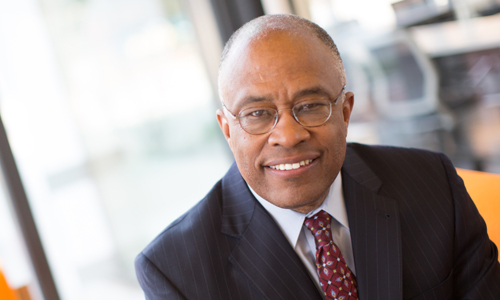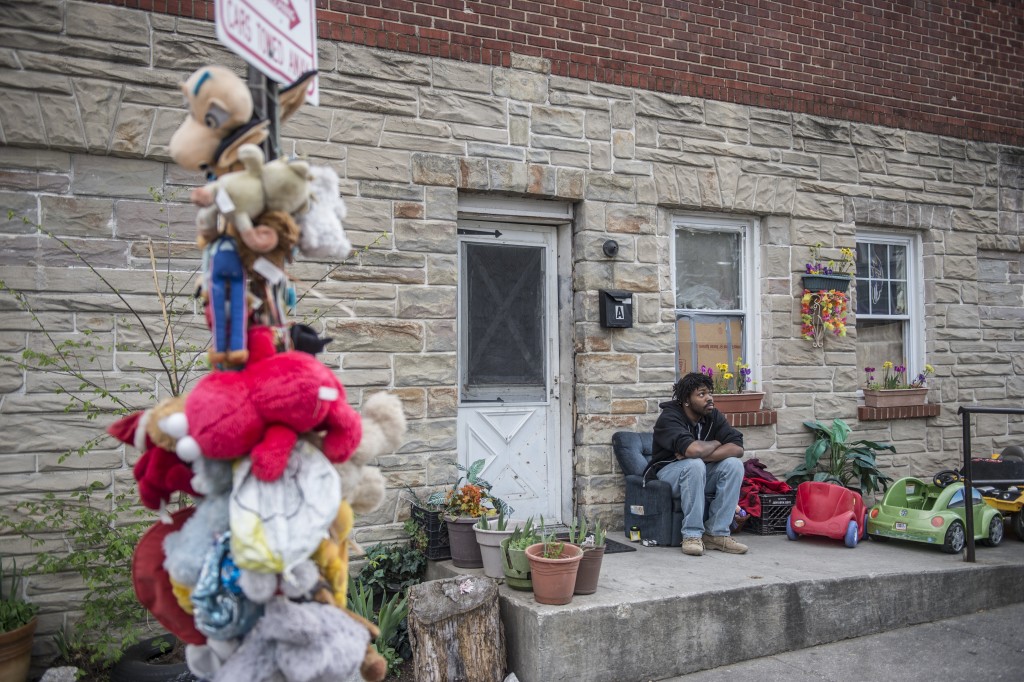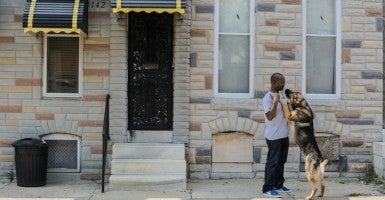Sandtown-Winchester, a place of boarded-up and broken homes made famous as the neighborhood where Freddie Gray lived, is among the bleakest places in Baltimore.
But it’s not for a lack of trying to make it better.
In the early 1990s, former Baltimore Mayor Kurt L. Schmoke, a Democrat who was the city’s first elected black mayor, launched an effort to improve Sandtown.
In a public-private partnership, developer James Rouse, who developed Baltimore’s gleaming Inner Harbor, and city officials spent more than $130 million on Sandtown, focusing the core of their efforts on affordable housing, but also prioritizing schools, crime, the economy and health services.
>>>How to Make Life Better in Baltimore
But today, Sandtown leads all of Maryland in the number of residents who are in prison.
A 2011 report on Sandtown and an adjacent area, Harlem Park, showed those two neighborhoods had roughly double the city’s rates of unemployment, poverty, homicides and shootings.
The Baltimore Sun recently reported, “those who have examined the revitalization effort say it’s impossible to measure the impact because there was little accounting at the time and less follow-up afterward.”
As time passes and Sandtown—and wider Baltimore—recedes from the spotlight, community leaders are discussing how to rebuild and recover.
On Friday, The Daily Signal spoke with Schmoke, the former mayor (from 1987 to 1999) and current president of the University of Baltimore, to reflect on his time leading the city—particularly his Sandtown project—and to predict how public policy can make life better.
The Daily Signal: Why did a $130 million investment not save Sandtown?
Schmoke: The Sandtown effort that involved government and private sector, particularly nonprofit, was really just the first step.
None of us envisioned it as being the final step or the single answer to Sandtown’s problems.

Kurt Schmoke, the president of the University of Baltimore and the city’s former mayor (Photo courtesy of the University of Baltimore)
But we really did think we were making progress by clearing out some of the dilapidated housing, building new houses, renovating a public market that was in the area to try to stimulate investment.
I left office in December 1999 and the question I have asked and many others have asked, is what happened to the partnership between the community and other partners from 1999 to 2015?
Q: Are you suggesting that a lack of follow-up imperiled the results?
A: That’s the question.
I talked to [former Baltimore] Mayor [Sheila] Dixon recently and she told me that she thought we spent a great deal of money on bricks and mortar and not enough was spent on social services. So I said that ought to be looked at and maybe that’s the next step in the process.
Because our effort was called “community building and partnership” we tried to make it real clear that we wanted to do things with people, not for them.
Q: As someone who has spent your career trying to make Baltimore better, how did the death of Freddie Gray, and the unrest that followed, make you feel?
A: One of the things I did one afternoon, I drove through Sandtown and I was actually amazed because I saw the houses we built and they looked very good, yet across the street were several houses that were vacant and boarded up.
So it was a real mix and so I had kind of mixed views about the whole thing.
I still think the investments we made were appropriate, but they shouldn’t have stopped there.
It required a sustained partnership.
Q: Why are people angry?
A: Because of a few things.
For one, Sandtown, like the city itself, has been buffeted by changes in the global economy.
A lot of jobs in Baltimore are going begging because there’s a gap between the skills required by the job and the skills that people have obtained. That’s a responsibility for all of us.

People loiter outside Lauren’s Mini Mart at north Carey St. and Laurens St., a popular corner where drugs are allegedly sold in the Sandtown-Winchester neighborhood of Baltimore, Md. (Photo: Jessica Koscielniak/TNS/Newscom)
The other thing is that there was change in the philosophy of policing.
>>>Will Freddie Gray’s Death Inspire ‘New Life’ to Baltimore?
I vouched for implementing community policy, but [former Baltimore Mayor] Martin O’Malley wanted zero tolerance policing.
That’s been overdone and has led to some excesses.
Another thing we need to talk about is transportation. We need to get folks out to jobs in the region better than we have been. That’s why you’re seeing people vouching for better mass transit.
When it takes two hours one way to get to a minimum wage job, it is a disincentive to a lot of people.
Q: How much can public policy help people in Baltimore?
A: There are some things public policy can do, but again this whole notion of partnership is important because [there are things] people can do for themselves, like staying in school and trying to take advantage of the opportunities education provides.
There are some things public policy can do, like making investments in transportation, and passing the law to expunge records from non-violent drug offenders, which would have a huge impact on young people in our community.
Because folks who do get job opportunities often run into the fact that employers can’t hire because somebody has a criminal record.
That shouldn’t be a cross that people bear throughout their lives if they engage in some youthful indiscretion when they were teenagers.
There are aspects of this that public policy can play a role in, but it’s not going to be the entire answer. It’s got to come out of the community too.
Q: How would you respond to people who criticize Baltimore as an example of overspending without getting results?
A: I would tell them to come to Baltimore. Out of the number of protests we had after Freddie Gray’s death, overwhelmingly they were well organized and peaceful.
We did have some days of unrest, but when you look at the community whether you do it physically or talk to people, you see much that’s good rather than that’s bad and you see a lot of positive things.

Residents of West Baltimore continue to live their lives after the death of Freddie Gray caused unrest in the city. (Photo: Robert Stolarik/Polaris/Newscom)
I suggest to folks to look at the communities where we once had public housing high rises that had become warehouses of poverty. Through public policy, the government allowed us—in partnership with the community—to tear those high rises down and to build nice townhouses.
The same people that are living in them were once in the high rises, but their quality of life has changed dramatically, crime rates are down in the area, and people are living a positive life.
You can’t just look at a couple days of unrest and say public policy does not make a difference. Because I can show you many examples where public policy has improved the quality of life for people living in poverty in our city.
Q: A recent study shows that children born in Baltimore have the worst odds of escaping poverty. Why is that?
A: I have seen so many families whose lives have been improved by government action. I know we have pockets of poverty in the city. When I ran for mayor, there was a 1987 foundation study that said, for all the great things going on in Baltimore you have to remember there is a lot to meet the glitter.
We understood that and have been working on it, and I think many lives have been improved.
The study shows we have a lot more work to do. We shouldn’t say we’ve solved the problems, but we have made progress.
Q: Why should someone have hope living in Baltimore?
A: There are so many people to point to, young people who grew up in this community, who are successes. If people reach out to those who are trying to assist the community, whether it’s the government or private sector—joining with those partners is going to improve their prospects.
It’s people working together, not government doing for people.





























